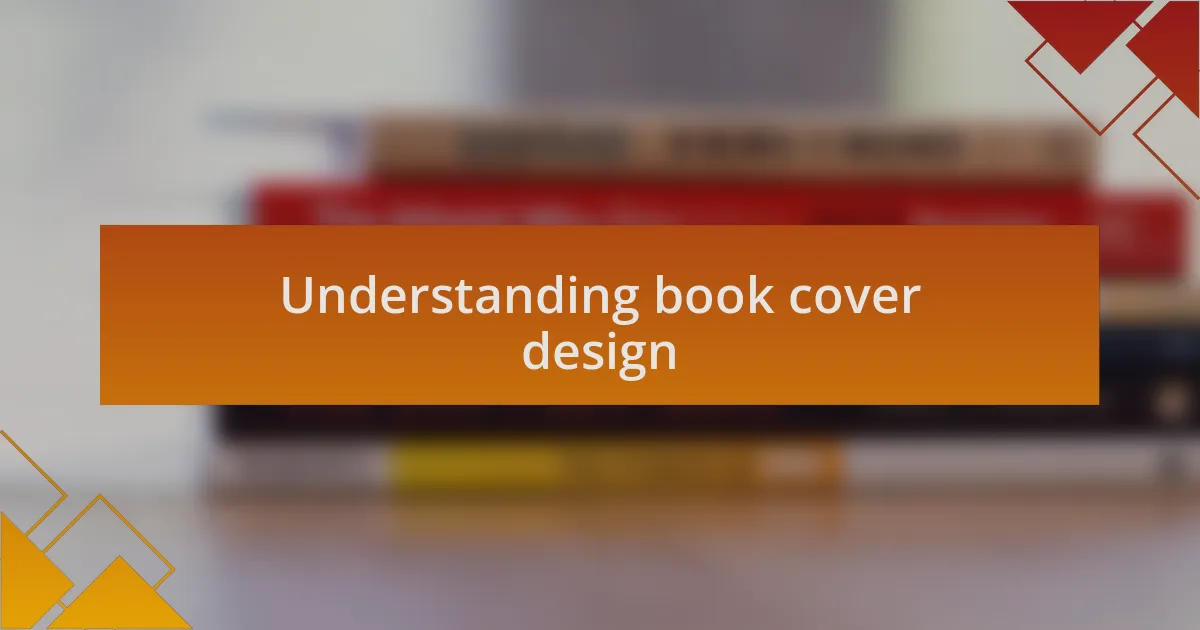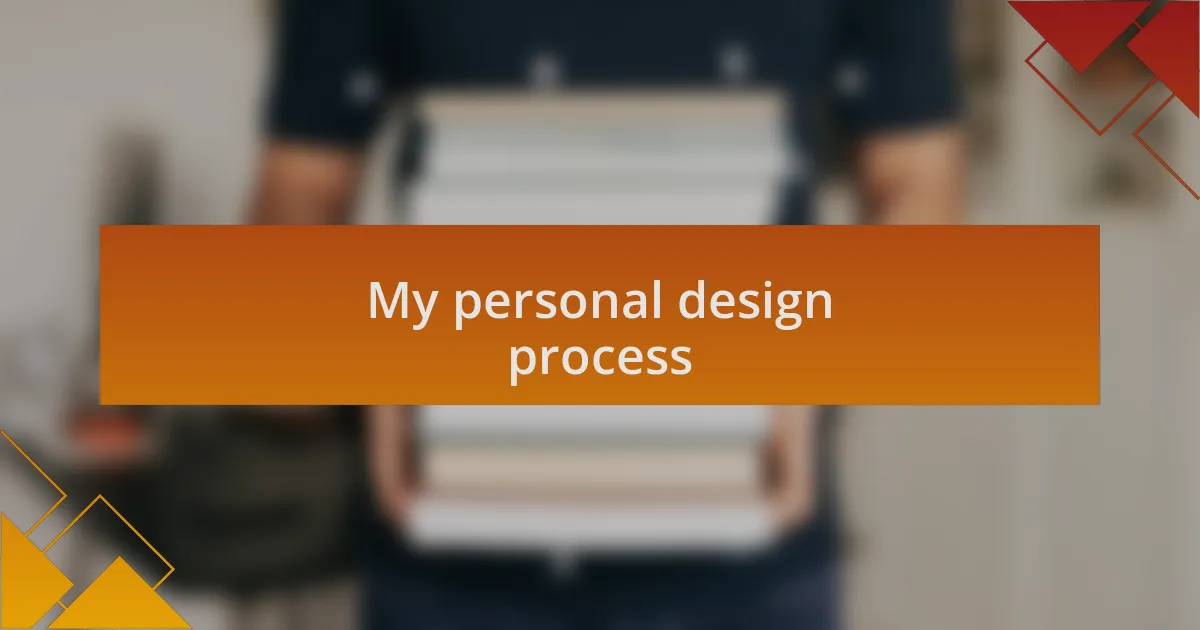Key takeaways:
- Book cover design combines visual elements that reflect the story’s themes and emotional tone, aiming to create a connection with the reader.
- The design process involves brainstorming core themes, selecting appropriate colors and typography, and seeking feedback from others to refine concepts.
- Utilizing tools like Adobe InDesign, Canva, and Procreate enhances the design experience and allows for creative expression, while stock photo websites provide valuable visual resources.
- The personal design process includes brainstorming, sketching rough drafts, and transitioning to digital design to capture the story’s essence effectively.

Understanding book cover design
Book cover design is more than just an aesthetic choice; it’s the first impression a reader has of the story inside. I remember my initial encounters with book covers that left a lasting impact, like that haunting image on a thriller novel that compelled me to pick it up. What makes a cover truly resonate? It’s often the blend of visual elements that reflect the book’s themes and emotional tone.
Each design decision carries significance; colors can evoke specific emotions, while typography can convey the genre at a glance. I’ve learned that an effective cover not only attracts attention but also tells a story of its own. Have you ever found yourself drawn to a book simply because the design felt inviting or intriguing? That’s the power of good cover design—it’s about creating a connection before the reader even flips to the first page.
When I design a cover, I consider the target audience as much as the story itself. I ask myself: What do they crave visually? This approach demands empathy and intuition, balancing the writer’s vision with the readers’ expectations. It’s both an art and a strategy, and I often find the most rewarding designs are those that reflect a deeper understanding of the narrative’s heart while appealing to the reader’s desires.

Steps to conceptualize book covers
To conceptualize a book cover, I start by brainstorming the core themes of the story. For instance, when working on a fantasy novel, I recall feeling transported to other worlds—how can I capture that sense of adventure visually? I sketch out various ideas, thinking about symbols or motifs that might resonate with potential readers. This process often involves looking for inspiration from other covers, but I always aim for a unique angle that reflects the individual story.
Next, I turn to the color palette and typography. I’ve experienced how a single color can evoke joy or despair—so, why not use that to my advantage? For one project, I chose deep blues and soft golds for a romance novel, reflecting both the tumultuous journey and the eventual warmth found in love. Matching the typeface to the genre also plays a crucial role; a modern serif can communicate sophistication, while a bold sans-serif might suggest a gripping thriller. It’s all about setting the right tone.
Finally, I often share my concepts with a small group of readers or fellow authors. I’ve found that fresh perspectives shine a light on aspects I might have overlooked. What resonates with them? What emotions do they feel when they see my designs? This feedback loop is invaluable, allowing me to hone the cover until it feels just right—not just for me, but for the readers who will connect with the book.

Tools for creating book covers
Designing a book cover can be greatly enhanced by the right tools. I often lean on software like Adobe InDesign or Canva, which offer extensive features for layout and design. When I first experimented with Canva, I was surprised at how intuitive it was; the drag-and-drop interface allowed me to focus on creativity rather than getting bogged down in complicated processes. Have you ever tried a tool that made a daunting task feel easier? Finding the right software can transform your design experience.
Another favorite of mine is Procreate, especially when I want to create custom illustrations. The tactile experience of drawing directly on my iPad feels incredibly rewarding, and it’s helped me develop a personal style that I love. I remember spending hours sketching cover art for a middle-grade adventure book, feeling the excitement build with each stroke of my Apple Pencil. This connection to the art process not only fuels my passion but also brings a sense of authenticity to my covers.
Lastly, I can’t overlook the importance of stock photo websites. They’ve become a treasure trove for finding the perfect image that aligns with my vision. Whenever I’m in need of a captivating visual element, I feel a surge of anticipation as I browse through endless possibilities. For one historical fiction project, I stumbled upon an evocative photo that encapsulated the book’s essence, and it felt like fate. How often do you discover something that seems to speak directly to your project? By leveraging these resources, I can create book covers that truly resonate with readers.

My personal design process
When I sit down to start a book cover design, my personal process always begins with brainstorming. I jot down themes and emotions I want the cover to convey, often using mind maps to visualize connections. It’s like piecing together a puzzle, and I can’t help but feel a thrill of possibility when I see concepts start to take shape. What if that initial idea transforms into something even bigger?
After gathering my thoughts, I dive into sketching rough drafts. I remember one particular project for a romance novel where the first few attempts felt lackluster. It was frustrating, but I learned that sometimes stepping back and letting ideas simmer leads to breakthroughs. That’s when the best concepts often emerge, don’t you think? These sketches are messy but vital—they allow me to explore shapes, colors, and fonts without the pressure of perfection.
Once I have a solid draft, I transition into digital design. This part of the process is where I bring all my ideas to life. I vividly recall the satisfaction I felt when finalizing a cover for a dark fantasy book. The colors seemed to leap off the screen, and I couldn’t help but smile at how it captured the story’s essence. It’s moments like these that remind me why I love this work. How does the visual representation of emotion resonate with you?